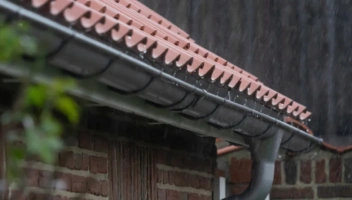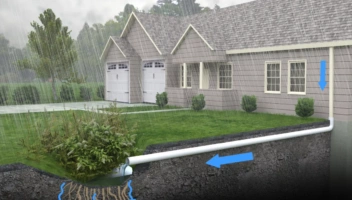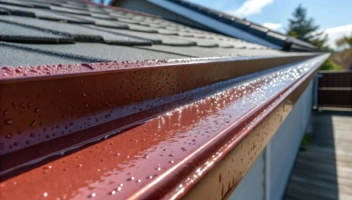Becoming a Winter Warrior: The Ultimate Guide to Winterize Your Home
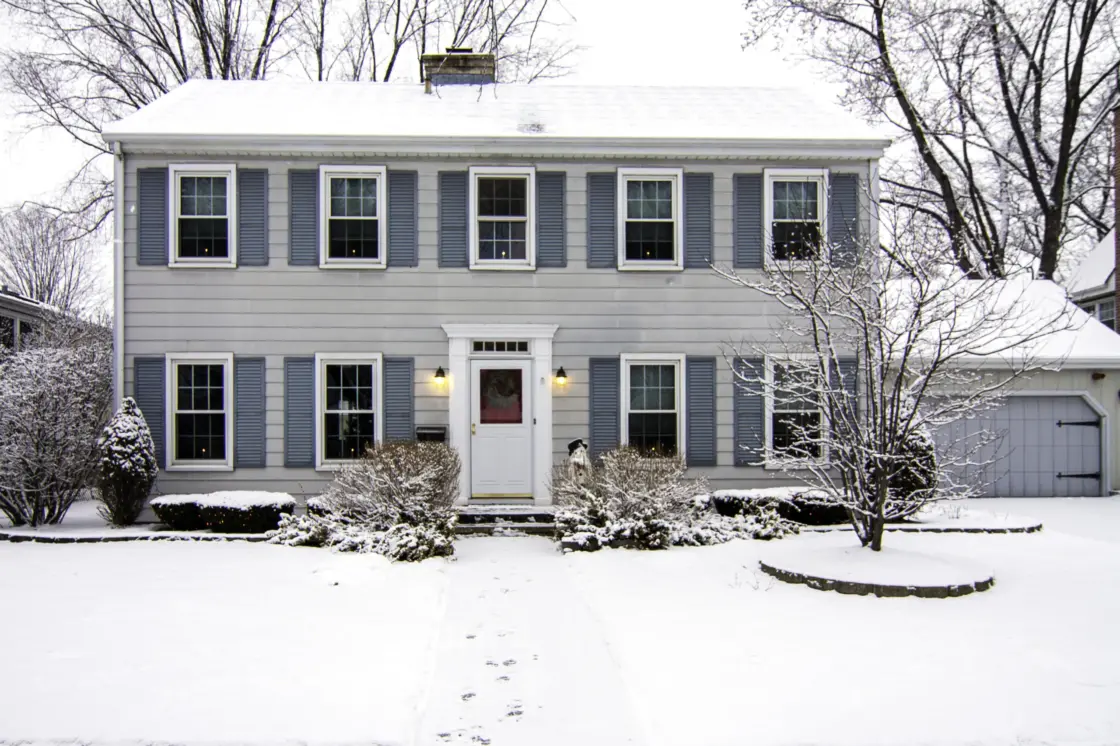
As winter’s icy grip takes hold, there’s more to consider than cozy sweaters and hot cocoa. It’s time to think about how your home will fare in the face of frosty mornings, snow-filled afternoons, and cold nights. This is where the concept of ‘winterizing’ steps in—a process that prepares your home to withstand the harshness of winter, keeping you and your loved ones safe, warm, and worry-free.
Picture yourself not just as a homeowner, but as a “Winter Warrior.” As a Winter Warrior, you’re not just surviving the cold season but conquering it. You’re taking proactive steps to protect your home against the onslaught of winter’s challenges.
So, grab your shield (coat) and sword (shovel), Winter Warrior! It’s time to embark on the ultimate quest. Winterize your home and ensure a comfortable, secure winter season.
When to Winterize Your Home
Timing is everything when it comes to winterizing your home. Ideally, these preparations should begin in the fall, before the first frost sets in. This gives you ample time to check every item on your winterization checklist without feeling rushed. It also ensures your home is ready to face the cold from day one of winter.
But what if you’re reading this and winter has already begun? Well, don’t worry! It’s never too late to start winterizing your home. Sure, you might have to brave the cold a bit during the process, but remember, every step you take towards winterizing your home will make it that much cozier and safer.
So, whether you’re ahead of the game and prepping in the fall or playing catch-up in the middle of winter, the important thing is to get started. The sooner you begin, the better protected your home will be, and the more comfortable and worry-free your winter season can become.
In the end, remember that winterizing is not just about surviving the cold months; it’s about creating a warm, safe haven to enjoy the winter season in comfort.
How to Winterize Your Home: A Comprehensive Checklist
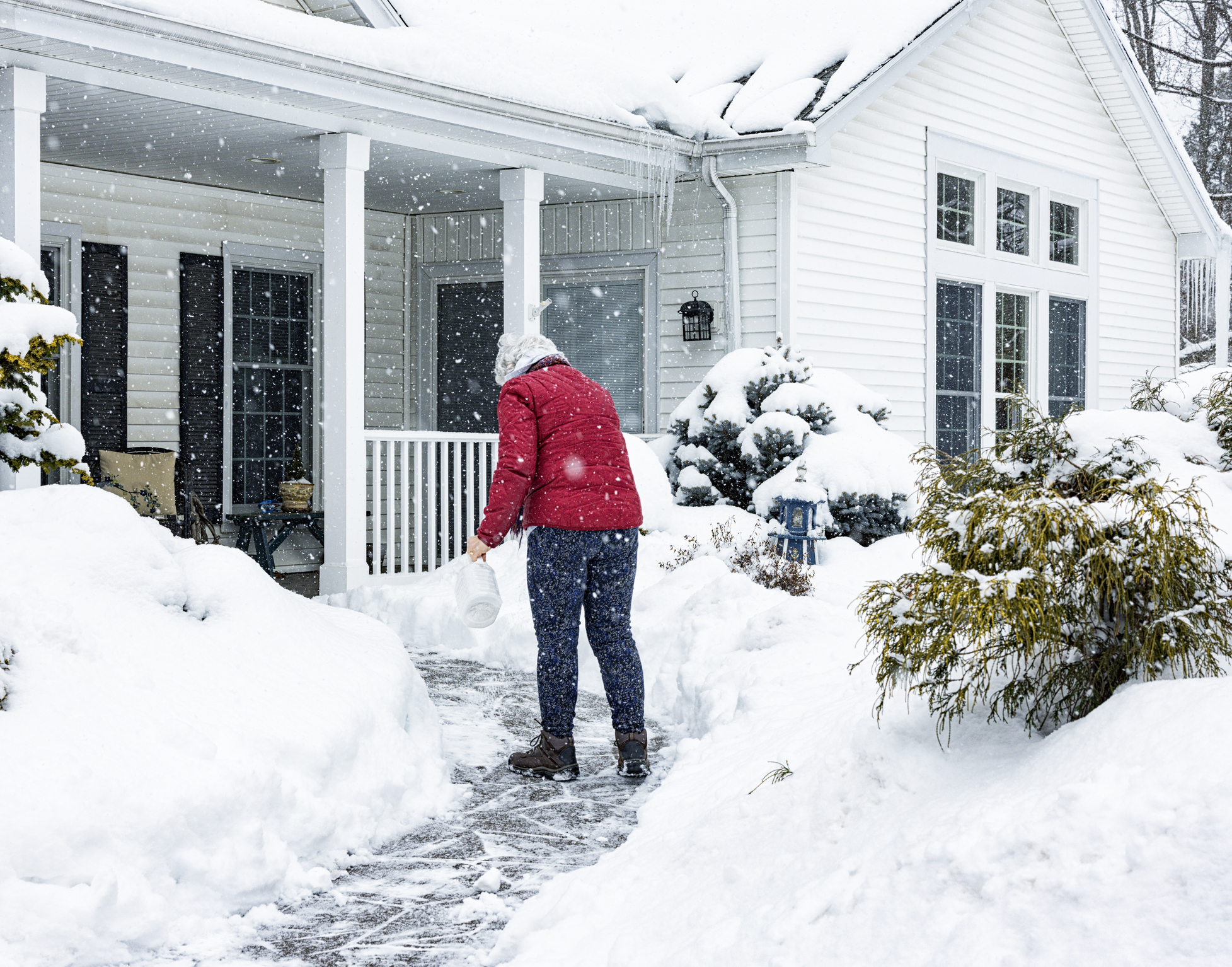
Protecting your home against the winter chill might seem daunting, but we’ve got you covered with this comprehensive checklist. Follow these steps to ensure your home stays warm and cozy all winter long:
- Inspect and Seal Windows: Did you know that up to 25% of a home’s heat can escape through gaps in windows? Start your winterizing process by inspecting windows for any cracks or gaps. Use weatherstripping or caulk to seal them up and keep the warmth in. Consider investing in thermal curtains or window insulator kits for added insulation.
Tip: Light a match in front of a window. If the flame blows out, there is a leak, and you should seal the window. - Clean and Protect Gutters: Cleaning gutters may not be the most glamorous job, but it’s an essential one. Remove any debris to allow water to flow freely. When gutters are clogged, water running off your roof has nowhere to go. Water gathers in your gutters, enabling ice dams to form and putting your home at risk of water damage.
Tip: To make gutter cleaning easier next year, consider upgrading to a gutter guard system. LeafFilter is a micromesh gutter protection system that keeps debris out while letting water in. - Check and Secure the Roof: Your roof takes a beating during winter. Inspect it for loose or missing shingles that could let in moisture. If you spot any problems, call a professional roofer to fix them before winter strikes.
Tip: Never climb on a roof unattended. Use the buddy system, or better yet, let a pro handle it! - Insulate Pipes and Prevent Freezing: Insulating your pipes can prevent them from freezing and potentially bursting. Pay extra attention to pipes in unheated areas like the garage or crawl spaces. You can use foam pipe insulation for this task.
Tip: If you are away from home for more than a few days, ask a friend or neighbor to stop by and run warm water from your taps for a few minutes. - Maintain HVAC Systems for Energy Efficiency: Regular HVAC system maintenance can improve its efficiency and longevity. Replace the filters regularly, and consider getting a professional tune-up before winter sets in.
Tip: If you live in a region that experiences four seasons, get a tune-up twice a year for optimal performance in winter and summer. - Prepare Driveways and Sidewalks for Icy Conditions: Keep your driveways and sidewalks safe from icy conditions by having a good-quality de-icer. Use rock salt or calcium chloride before snowfall begins to prevent ice from bonding to the surface. Remember to purchase a sturdy, ergonomic snow shovel to remove any accumulated snow.
Tip: Spread the de-icer evenly but sparingly. Too much can harm vegetation and local water supplies. If you have pets, opt for a pet-friendly de-icer. - Seal Cracks in Walls and Foundations: Like with windows, cracks in your home’s walls or foundation can let in frigid air. Inspect your home’s exterior and use caulk or weatherstripping to seal any gaps.
Tip: Consider using an infrared thermometer to detect drafts. Simply point it at areas where you suspect a draft; if the temperature reads lower than expected, there’s likely a leak. - Clean or Plug Chimney: have your chimney swept to remove any built-up debris that could pose a fire hazard. If you have a fireplace, use a secure screen or glass enclosure to prevent sparks from escaping. If you don’t plan on using your chimney during the winter, consider having it plugged in to prevent drafts and energy loss.
Tip: Before lighting a fire, check that your chimney flue is open. A closed flue can cause smoke and carbon monoxide in your home. - Check Smoke and Carbon Dioxide Detectors: This task is often overlooked but is crucial for safety. Winter sees an increase in residential fires and carbon monoxide leaks, so ensure your detectors are in working order. Change batteries if needed and replace any sensors that are more than ten years old.
Tip: Test your smoke and carbon dioxide detectors monthly to ensure they function correctly. - Store Outdoor Furniture and Tools: Protect your outdoor furniture, tools, and garden hoses from harsh winter conditions by storing them in a shed or garage. If you don’t have space for storage, cover them with waterproof tarps.
Tip: If you’re storing gas-powered tools like a lawn mower, follow the manufacturer’s instructions to winterize them properly.
By following this checklist, you’ll be well on your way to having a winter-ready home. Remember, the goal is not just to survive winter but to enjoy it!
Dangers of Not Winterizing Your Home
Winter is not just about the serene beauty of snow-covered landscapes or the joy of building a snowman in your backyard. It also brings challenges for homeowners, creating potential risks and damage if homes are not adequately winterized.
For starters, let’s talk about ice dams. These occur when heat from your home causes the snow on your roof to melt. It refreezes at the roof’s edge and forms an ice dam. The ice can lead to water seeping into your home, causing considerable damage to walls, ceilings, insulation, and other areas. You can expect ice removal to cost $1200 on average, though it can range from $600 to $1800.
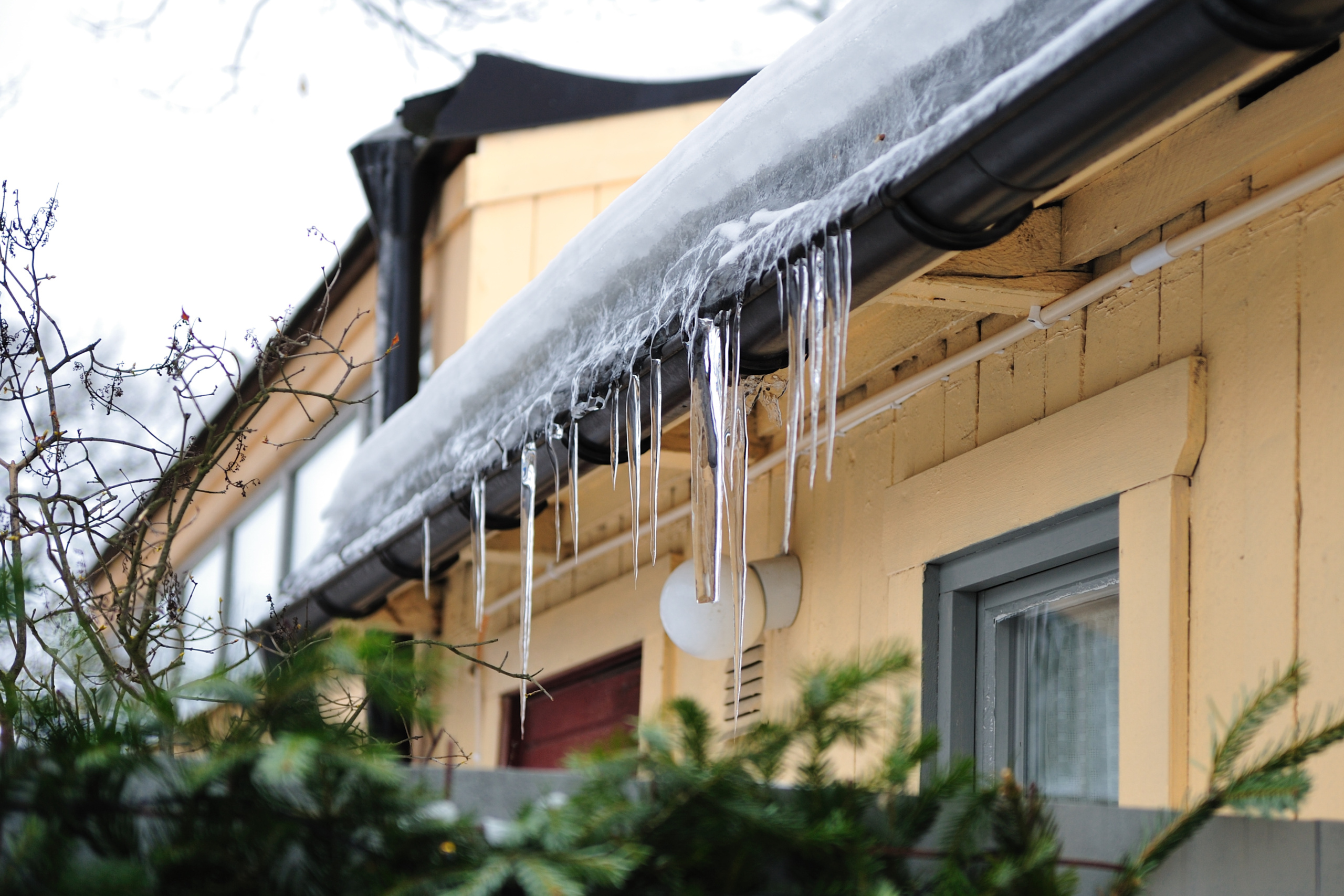
Then, there are clogged gutters, which can be a silent menace. When leaves, twigs, and other debris clog gutters, they can’t effectively channel water away from your home. Add freezing temperatures to the mix, and you have a recipe for trouble. Ice can form, making the gutters heavy and causing them to pull away from the house, sag, or even collapse.
According to the National Association of Home Builders, a quality gutter system collects and diverts around 600-gallons of water for every inch of rain that falls during a storm. Imagine all that water wreaking havoc on your home if your gutters aren’t doing their job!
And let’s not forget frozen pipes. When water inside your pipes freezes, it expands, which can cause your pipes to burst. The Insurance Institute for Business & Home Safety states that a burst pipe can cause more than $5,000 in water damage.
As you can see, failing to winterize your home can lead to several more troublesome problems than just a bit of chilly air seeping through a window. But don’t worry; we’re here to guide you through the process of protecting your home this winter.
Additional Tips to Protect Your Home While You’re Away
For all the winter warriors out there, who prefer to escape the cold or those who travel during the winter months, this section is for you. Here are some additional tips to ensure your home remains safe while you’re away:
- Make Your Home Look Occupied: An empty home can be a tempting target for thieves. To deter potential burglars, make your home appear occupied. This could mean using timers to switch lights on and off, asking a neighbor to collect your mail, or even hiring a house-sitter.
- Prevent Water Damage: Shutting off your water supply and draining your pipes can prevent unexpected leaks or bursts while away. Don’t forget to drain your outdoor garden hoses and insulate outdoor faucets.
- Protect Against Pests: Winter can drive pests like mice indoors for warmth. Seal any holes or gaps in your home’s exterior to keep them out. Consider scheduling a pest control service before you leave.
- HVAC and Insulation Maintenance: Before heading out, have your HVAC system serviced to ensure it’s working efficiently. Also, check your home’s insulation, particularly in the attic and crawl spaces. Proper insulation will keep your home warm and help prevent ice dams from forming on your roof.
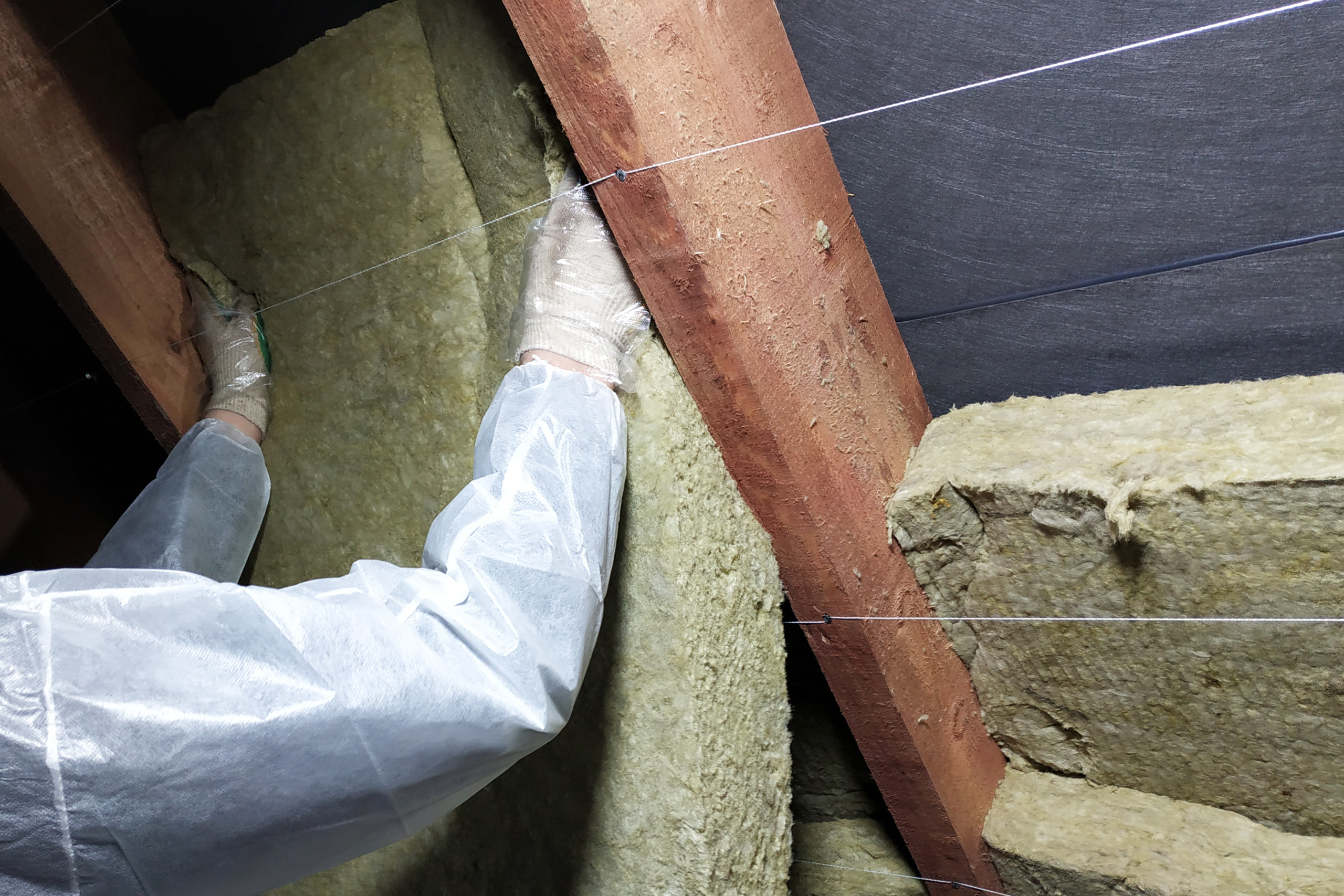
Every effort you put into winterize your home pays off in the form of peace of mind while you’re away. So, you can spend your time enjoying your winter travels.
Stock Up on Supplies
Winterizing your home isn’t just about sealing cracks and insulating pipes; it also involves planning for unexpected situations. This is where your winter supplies come in. Let’s dive into some essentials you’ll need to weather any winter storm:
- Shovels and Ice Scrapers: These tools are your first line of defense after a heavy snowfall. A sturdy shovel will make clearing your driveway and sidewalk much easier, while an ice scraper is crucial for keeping your car windows clear.
- Gutter Cleaners: A gutter cleaner tool can help minimize the need to climb a ladder to clean your gutters. These tools help ensure your gutters are free from debris that can cause clogs and ice dams.
- Faucet Covers: Faucet covers are simple devices that can save you a lot of trouble by preventing your outdoor faucets from freezing.
- Roof Rakes: These special rakes allow you to safely remove snow from your roof, reducing the risk of damage from heavy snow loads.
- Emergency Car Kit: An emergency car kit is a must if you’re traveling during winter. This kit should include jumper cables, a blanket, a flashlight, a first-aid kit, and a few non-perishable snacks.
- Extra Pet Food and Non-perishable Food: You never know when a storm might keep you from getting to the store. Stocking up on extra pet food and non-perishable items for yourself ensures you won’t go hungry.
- Flashlight + Batteries: Power outages are not uncommon during winter storms. A reliable flashlight and extra batteries will help you navigate your home safely in the dark.
- Weather Radio: A battery-powered or hand-crank radio can be a lifesaver, keeping you updated on weather conditions when the power’s out.
Remember, being prepared is the key to handling any winter emergency with ease. By stocking up on these supplies, you’ll be ready for whatever winter throws your way.
Be a Winter Warrior
Winterizing your home is not just about comfort but protection, prevention, and peace of mind. By taking these steps, you’re not just preparing for winter—you’re becoming a true “Winter Warrior,” ready to face the season head-on.
One crucial aspect of winterization is your gutters. They play a pivotal role in protecting your home from water damage, and ensuring they’re in top shape for winter is essential. That’s where LeafFilter comes in.
With its patented design, LeafFilter keeps your gutters clear of debris, helping prevent ice dams and the potential water damage they can cause. It’s a straightforward, one-time investment that could save you thousands in future repair costs.
Ready to become a Winter Warrior? Learn more about LeafFilter and how it can protect your home this winter. Schedule an appointment for a free consultation. We’re here to help you prepare your home for whatever winter throws at it.
